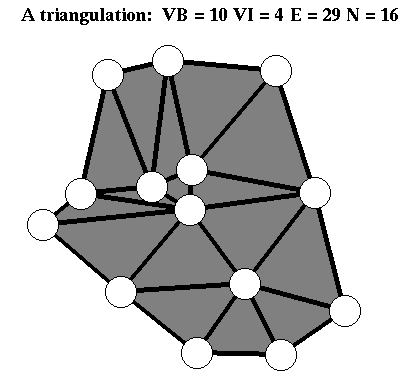A Triangulation T is a collection of N triangles satisfying the following requirements:

The first requirement says that triangles don't overlap. The second requirement rules out combinations of triangles where one has a vertex in the interior of an edge of another triangle, and the strange sounding last requirement rules out holes, pinchpoints (where just 2 triangles meet in a single point) and disjoint sets of triangles.
The reason for the popularity of triangulations is that given any set of points, one can construct a triangulation that has those points as the vertices of the triangulation. Triangulations are a natural generalization of the concept of partitioning an interval into subintervals.
The Figure nearby illustrates a triangulation. The vertices are indicated by circles, and the triangles by grey shading. The domain D of interest therefore is the grey polygon. The triangulation consists of 16 triangles that share 14 vertices, 10 of which lie on the boundary of D .
To facilitate discussions we have to introduce some notation and language:
is the total number of vertices of T.
is the total number of edges of T.
VB = EB
E = 2VB + 3VI - 3
N = VB + 2VI - 2
Triangulations form a huge subject in Mathematics. You may be interested in looking at these two very different graduate level books in Computer Science and Mathematics, respectively: